From June 20 to 21, 2025, the 2025 National Energy Internet Conference was successfully held at the Hangzhou International Expo Center. This conference was jointly hosted by Tsinghua University and State Grid Corporation, and organized by the Tsinghua University Energy Internet Innovation Research Institute, the People's Government of Xiaoshan District, Hangzhou, State Grid Zhejiang Electric Power Co., Ltd. Hangzhou Power Supply Company, and the China Energy Research Society. The event was also co-hosted by the Tsinghua Sichuan Energy Internet Research Institute, Tsinghua University Carbon Neutrality Research Institute, and the Tsinghua University National Governance and Global Governance Research Institute.

Conference Venue
The conference, themed "Artificial Intelligence Deepening Collaboration, Energy Technology Seeking Innovation," focused on the deep collaboration between artificial intelligence and energy technology. It brought together political and business leaders, academic authorities, and technical pioneers from around the world in the energy sector to explore zero-carbon transition pathways and jointly discuss and design a "Chinese solution" for the digital energy era.
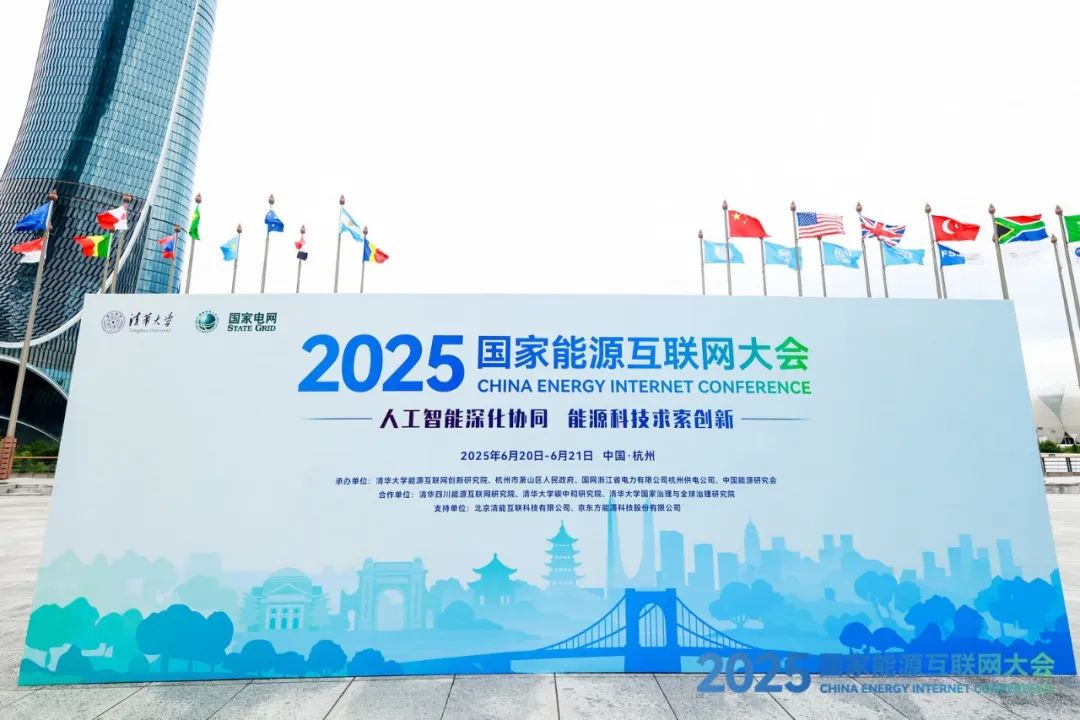
Conference Venue
The conference was attended by key figures including Huang Xuenong, Director General of the National Energy Administration; Sun Xudong, Member of the Standing Committee of the Hangzhou Municipal Party Committee and Secretary of the Xiaoshan District Committee; Shi Yigong, Academician of the Chinese Academy of Sciences and President of Westlake University; Ji Junmin, Vice Chairman of the Alumni Association of Tsinghua University and Deputy Director of the Tsinghua University Council; Zhang Dongxiao, Academician of the U.S. National Academy of Engineering and Executive Vice President and Dean of Ningbo Dongfang University; Yang Yong, Deputy Chief Engineer of State Grid Corporation; Wang Jifeng, Chief Engineer of China Southern Power Grid; and Mei Shengwei, Professor at the Department of Electrical Engineering at Tsinghua University and Vice President of Qinghai University. Over 1,000 leaders, experts, and representatives from energy internet-related companies, research institutes, financial institutions, industry associations, and news media attended the offline meeting, while more than 100,000 viewers watched the live broadcast through platforms such as Tsinghua University. The conference was hosted by Gao Wensheng, Secretary-General of the National Energy Internet Industry and Technology Innovation Alliance.
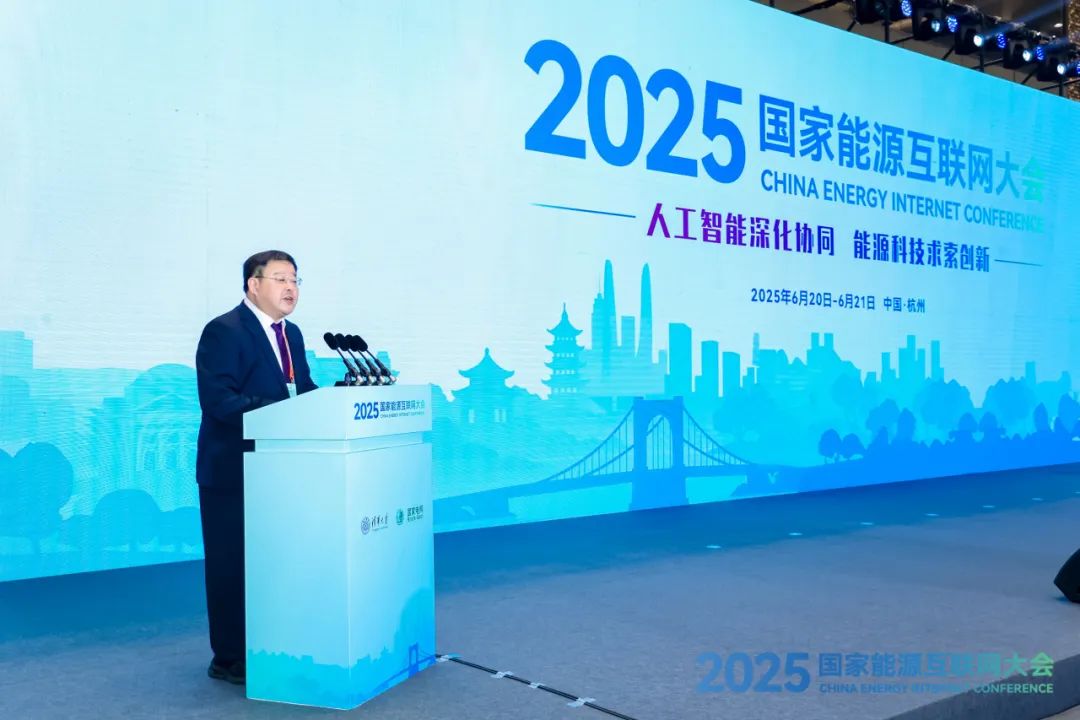
Gao Wensheng hosted the conference
At the opening ceremony, Huang Xuenong, Director General of the National Energy Administration, delivered the opening speech. He emphasized the National Energy Administration's firm implementation of new energy security strategies, the protection of energy security, and the promotion of green transformation. He stated that the energy internet, as a core platform integrating advanced technologies and intelligent control, is a key force driving the intelligent upgrade of energy systems and industrial transformation. Looking ahead to the completion of the "14th Five-Year Plan" and the new phase of the implementation of the Energy Law of the People's Republic of China, the National Energy Administration will focus on the following priorities: strengthening the foundation of energy security, improving resource allocation platforms, promoting the high-quality development of new energy storage and hydrogen energy; deep collaboration with artificial intelligence to build open ecosystems, enhance intelligent control and data value; promoting institutional and mechanism innovations, stimulating market vitality, enhancing the supply of standards, and aligning with international standards. He stressed the importance of transforming AI’s fast variables into strong energy dynamics to push the energy internet toward a smart future.
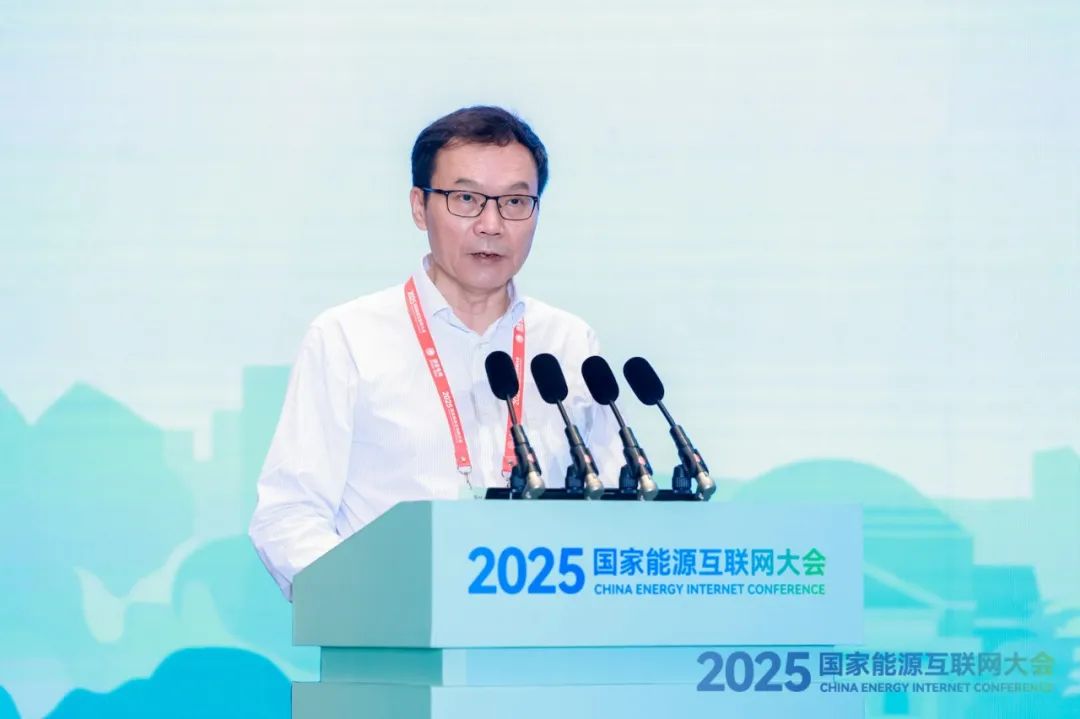
Huang Xuenong delivered a speech
Yang Yong, Deputy Chief Engineer and Director of the East China Division of State Grid Corporation, attended the conference and delivered a welcome speech. He pointed out that State Grid has been actively implementing national strategic plans, with a focus on building a new power system and advancing energy transformation and technological innovation. From January to April 2025, the company added 9.76 million kW of new energy, bringing the total installed capacity to 1.23 billion kW. The proportion of market-based trading of new energy power generation in total new energy generation exceeded 50% for the first time in 2024, and the company’s cross-regional transmission capacity surpassed 340 million kW. These efforts continue to strengthen resource allocation effectiveness. In the field of AI integration, State Grid has released the "Power 'Artificial Intelligence+' White Paper" and proposed the country’s first trillion-parameter model designed specifically for the power industry, promoting the systemic reconstruction of "AI+power" production capacity. Meanwhile, the company is accelerating the construction of the Jinshang-Hubei, Ningxia-Hunan ±800 kV ultra-high voltage transmission projects and the Gansu-Zhejiang ±800 kV flexible DC transmission project. The company’s investments in the first quarter increased by 27.7%, laying a solid foundation for the safe and reliable operation of the power grid. Additionally, State Grid has been deepening demand-side resource development, actively promoting the role of virtual power plant market participants, and optimizing the price formation mechanisms for various power auxiliary services, effectively improving system flexibility and low-carbon transition energy.
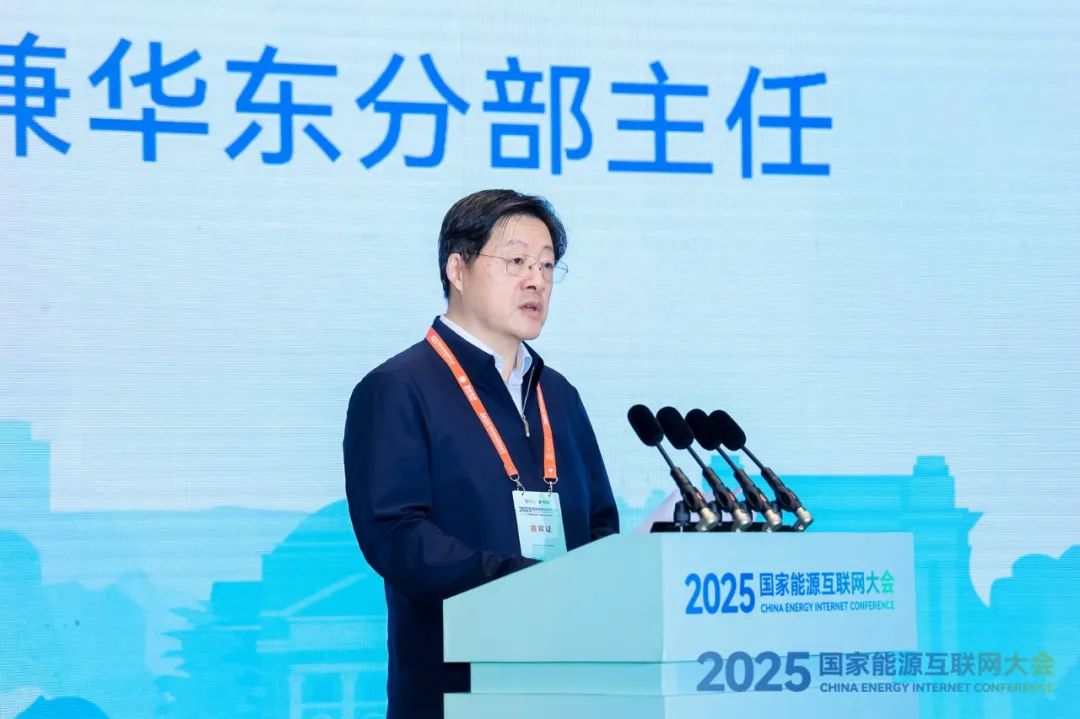
Yang Yong delivered a speech
Wang Jifeng, Chief Engineer of China Southern Power Grid, attended the conference and delivered a welcome speech. He noted that Southern Power Grid has built the "West-East Power Transmission" transmission corridor, with a total installed capacity exceeding 500 million kW and regional new energy installed capacity surpassing 200 million kW. This month, Southern Power Grid will start the trial operation of continuous settlement in the Southern regional power market. The company has innovatively developed the π-model system for digital grids, released the industry's first digital grid standard framework, and set up a "3+1+X" data center cluster. The company also launched the "Da Watt" AI model and implemented a collaborative new infrastructure model for digital computing. Looking ahead to the "15th Five-Year Plan," Southern Power Grid will deepen AI integration with energy systems, explore green electricity computing power trading paths, and contribute Southern Power Grid’s wisdom to building a new energy system.

Wang Jifeng delivered a speech
Sun Xudong, Secretary of the Xiaoshan District Committee of Hangzhou, delivered a speech in which he mentioned that Xiaoshan, as a manufacturing powerhouse in Hangzhou and a major energy consumer, faces the structural challenge of relying on external energy for 90% of its needs. The district has made energy transition a core task for high-quality development. The district was the first to introduce the national carbon peak pilot implementation plan, driving low-carbon transformation through digital empowerment, technological leadership, and institutional innovation. With the support of grid companies, the district has made significant progress in photovoltaic and energy storage installed capacity and growth, accelerating the construction of a new power system, and upgrading the traditional power grid to an energy internet. Xiaoshan looks forward to using this conference as an opportunity to deepen the collaboration between artificial intelligence and energy technology, inviting all sectors to participate in the energy internet industry opportunities and to co-create the "Chinese Solution for Digital Energy."

Sun Xudong delivered a speech
Ji Junmin, Vice Chairman of the Alumni Association of Tsinghua University and Deputy Director of Tsinghua University’s Council, delivered a speech in which he emphasized that Tsinghua University focuses on serving national strategies and proactively prepares for the intersection of artificial intelligence and energy transition. On the research front, the university has made progress in fields such as electric-hydrogen hybrid energy storage, flexible grid intelligent sensing, and energy digital twins. In terms of education, new colleges such as the Wuqiong College (AI + cross-disciplinary integration) and the Ziqiang College (intelligent + engineering) have been established, and AI-assisted degree and certificate programs have been launched to create a comprehensive educational system. In the future, Tsinghua will continue to deepen the cultivation of interdisciplinary talents, strengthen university-industry collaboration, and co-build research platforms to contribute to the new energy system and the dual-carbon goals.

Ji Junmin delivered a speech
Academician Shi Yigong of the Chinese Academy of Sciences gave a keynote report titled "Life Sciences and Future Development in the Post-AI Era." He pointed out that structure determines function, a fundamental law of the universe, and that AI is revolutionizing traditional scientific research. AlphaFold, based on neural network deep learning, predicted protein structures from 200 million to 600 million in three years—covering all species on Earth’s DNA-encoded proteins, far exceeding the total experimental data of the past century. This technology has opened a new era for drug target discovery and understanding life mechanisms, but AI’s absolute dominance in rule-based domains raises warnings about the potential for technological loss of control. He urged the scientific community to explore the application paths of AI in predicting structures while establishing risk control mechanisms.
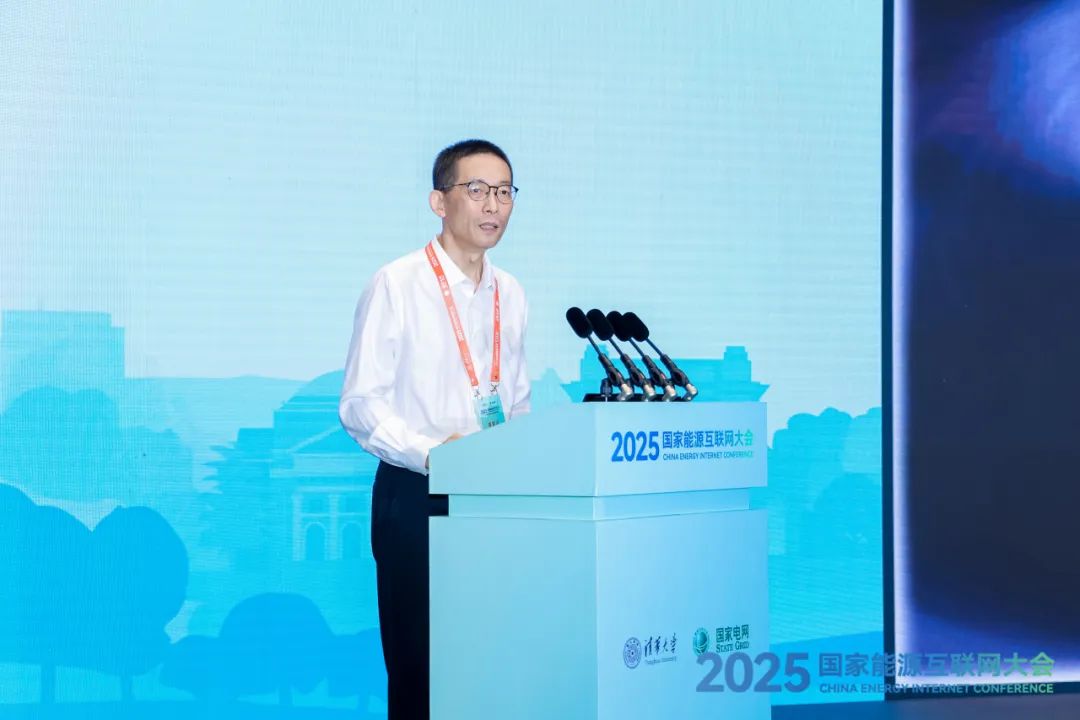
Shi Yigong gave a report
Academician Zhang Dongxiao from the U.S. National Academy of Engineering gave a keynote report titled "Scientific Machine Learning and Smart Energy Systems." Zhang discussed how machine learning has shown significant advantages in solving complex nonlinear problems in the energy sector. However, its effective application depends on the deep integration of data with industry knowledge. By combining high-quality data with industry mechanisms, it is possible to make a true leap from "big data" to "value-rich data." This integration improves model prediction accuracy and scientific interpretability, helping to reduce the dependency on large-scale datasets, thus driving smart energy systems towards more reliable, efficient, and sustainable development.
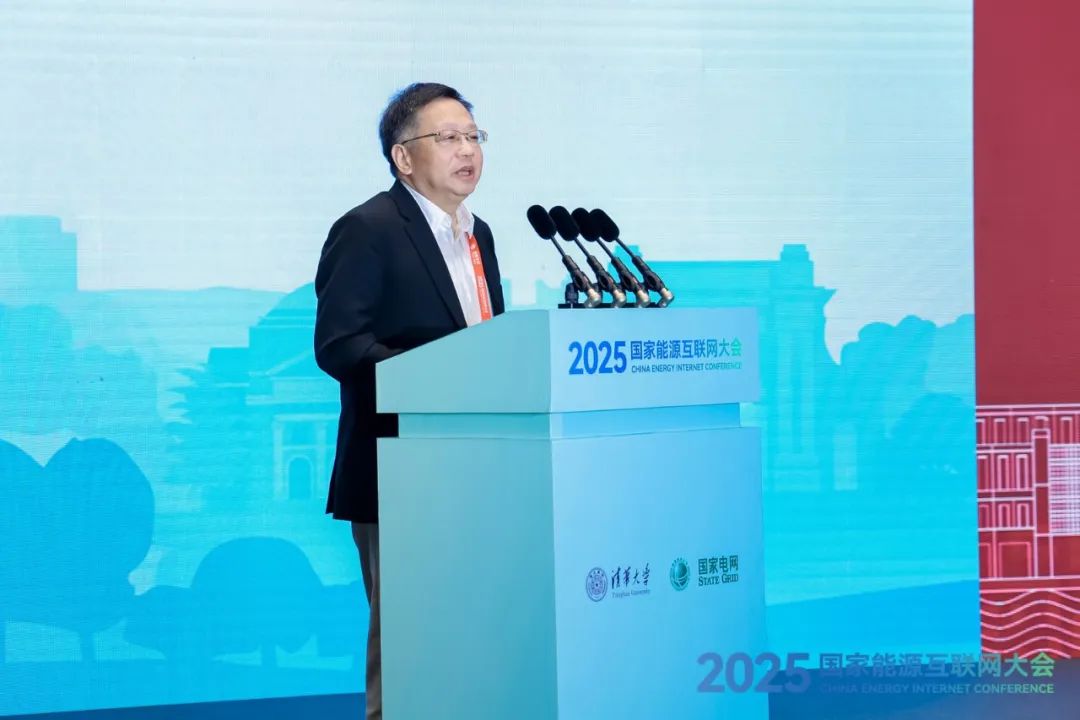
Zhang Dongxiao gave a report
During the conference, Gao Feng, Vice President of the Tsinghua University Energy Internet Innovation Research Institute, represented the Tsinghua University Department of Electrical Engineering and Applied Electronics, the Tsinghua University Energy Internet Innovation Research Institute, the Tsinghua Sichuan Energy Internet Research Institute, and the National Energy Internet Industry and Technology Innovation Alliance to officially release the "2025 National Energy Internet Development Annual Report." This report comprehensively and systematically reviews the latest energy internet policies, trends, and innovations, showcasing the rapid growth of the energy internet sector, including an increase in standardization and the expansion of energy internet companies. It highlights three key advances in 2024: the rapid release of policy planning documents, with 145 new standards issued (totaling 278, surpassing previous years); the addition of 110,000 new energy internet enterprises, with a growth rate of 50%; and in-depth exploration of carbon peak pathways, with updates on electric-carbon metering, electric-carbon coupling technology analysis, and virtual power plant implementation progress. The report reflects a broad consensus on energy internet development and provides authoritative quantitative evaluations and strategic insights to support the development of the national energy internet.

Release of the "2025 National Energy Internet Development Annual Report"
In addition, the conference honored leading companies with the "2025 Best Practice Case in Energy Internet" awards and recognized "Outstanding Contribution" experts.
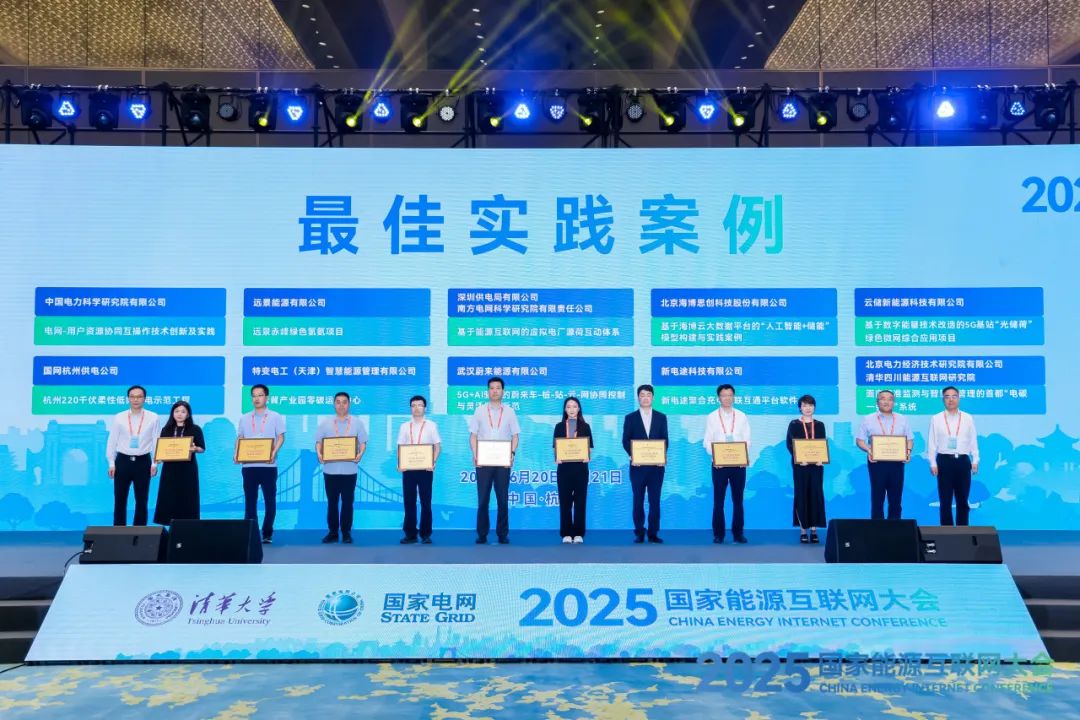
Best Practice Case Awards
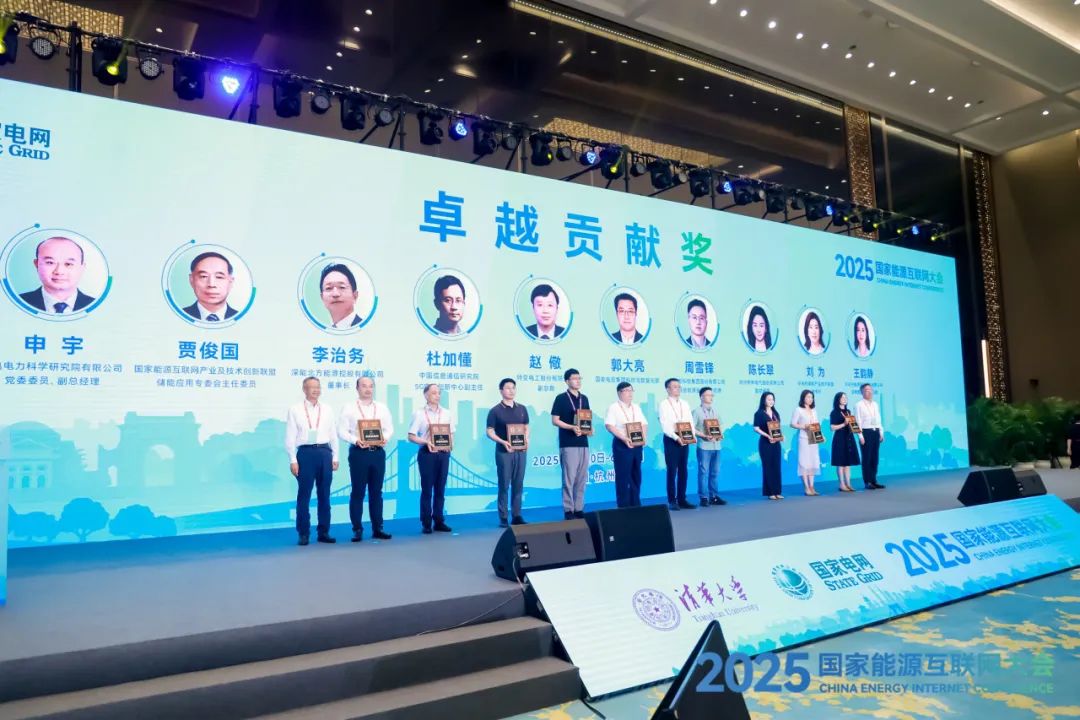
Outstanding Contribution Experts
During the keynote report session, experts such as Zhu Jiong, General Manager of State Grid Zhejiang Electric Power Co., Ltd. Hangzhou Power Supply Company; Huang Zhiyong, Senior Vice President of Envision Energy; Du Xinfeng, Vice General Manager of Hangzhou Yushu Technology Co., Ltd.; and Mei Shengwei, Professor at the Department of Electrical Engineering and Applied Electronics (EEA) of Tsinghua University and Vice President of Qinghai University, gave talks titled "Research and Innovation Practices of Artificial Intelligence in the Power Grid," "Empowering New Power Systems with AI," "Embodied Intelligence Development and Its Prospects in the Energy Field," and "Modeling, Sensing, and Regulation of New Power Systems Based on Deep Learning—A Brief Discussion on the Power of Computational Mathematics." These experts gathered to discuss strategies for the energy internet industry and technological innovation under the dual-carbon goals.

Theme Reports
On the afternoon of June 20, the conference organized six sub-forums on topics such as energy digitalization, energy IoT, carbon neutrality in power, energy storage applications, artificial intelligence, and new power equipment and engineering applications, fostering broad and in-depth discussions.
On the morning of June 21, experts from State Grid Corporation, the China Electric Power Research Institute, the Tsinghua University Energy Internet Innovation Research Institute, Guoneng Rixin Technology Co., Ltd., and Century Internet joined a comprehensive forum to discuss the collaborative development of artificial intelligence and the energy internet.

Comprehensive Forum
This conference, with the core theme of deep collaboration between artificial intelligence and energy technology, focused on cutting-edge technological breakthroughs and industrial innovation, bringing new perspectives driven by data, new ideas empowered by algorithms, and new actions for intelligent collaboration in the building of a green, intelligent, and sustainable energy future. Through systematic technological integration, the conference laid the foundation for building a greener, smarter, and more sustainable energy future, marking a new stage in China’s energy transition, where AI empowers the next phase of energy system development and contributes to global energy solutions with a "Chinese Solution."

















 News & Events
News & Events